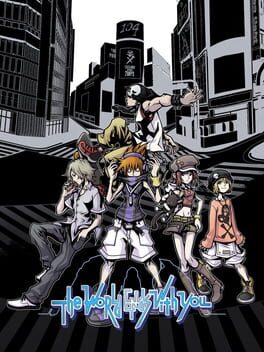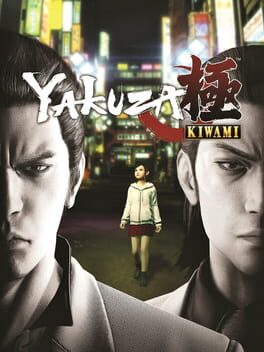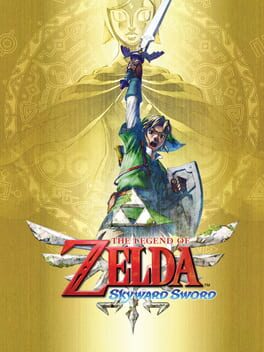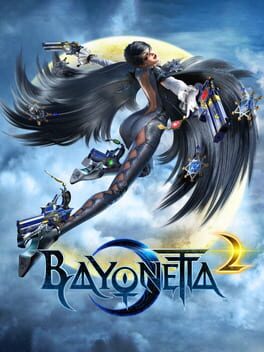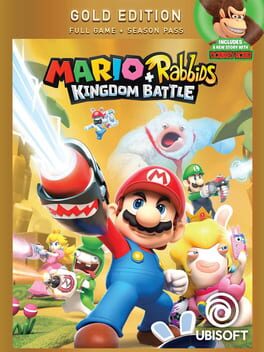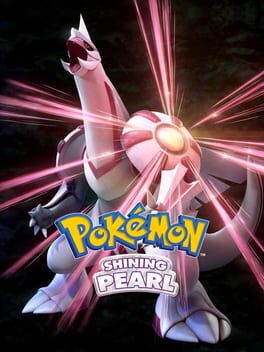salteax
9 reviews liked by salteax
There are four experiences a person could've had while playing TWEWY:
- those who were living the aesthetic and the setting that this game portrays in the moment (Shibuya-based teenagers who played this game upon release),
- those who grew up in that setting and got to re-experience it through playing this game later,
- those who are completely alien to this setting and take this setting as just another visual style, and
- those who were aware of the vibrant, grafitti and hip-hop influenced urban culture of the era, but could only watch from afar.
I fall onto the latter category. As a kid in the mid to late 2000's, I was aware of this culture and similar cultures throughout other countries. My local MTV was full of urban-esque imagery tinged with frutiger metro backgrounds and hip-hop soundtracks. Third-wave emo was dominating the alternative charts with their peculiar clothing and dramatic hairstyles, and anime was inching closer to the mainstream and also being influenced by that style (just look at Bleach's openings, endings and promotional material). I was awed by all of this, though too young to partake in any of it. I dreamed of the day I could be a cool teenager and "rep these fits, yo". Little did I know we would undergo a huge cultural shift, but alas.
When I played TWEWY for the first time last year, I was rushed with nostalgia. These clothing trends? this fascination with pins? this artstyle? I've "been" there. I had a DS around the time this game came out, I had firsthand experience with these graphics, these sounds. There was an immediate emotional connection. The reason why I have this completely subjective paragraph in what's poised to be an objective review is to illustrate how well TWEWY does what it sets out to do: represent a scene. I can only imagine how personal this game must feel to those who actually lived in that environment. It had a vision, and it executed it to perfection.
This atmosphere is the driving force of TWEWY and everything else is shaped around this stylistic expression. For example, the amount of combat options is immense, and your character is forced to switch it up and customize himself tons in accordance to passing trends. Each new neighborhood you hop in you have to change your clothes to fit the local trends, completely altering your attacks and moves. Like a teenager trying to find his place in society. See? this game is genius.
Of course, this also ties into the character arc of the main character, who learns to accept himself and his place in the world throughout his journey. This is why the game is named "The World Ends With You". It has a deep significance to the story, despite at first sounding like JRPG Engrish mumbo-jumbo.
The story itself is very engaging, and I found myself really invested in seeing it through the end. I wanted to see the conclusion, I wanted a certain character to come back, I rooted for the main character and his friends and I was entertained by the machinations of the situation they were all facing. Of course, all of this was enhanced by the gorgeous Nomura character designs, the overall great presentation and the wonderful soundtrack.
Not all is perfect, very unfortunately. The gameplay takes the hit. They could only do so much with such a premise and the limited DS hardware. They sacrificed playability in favor of irreverence. You control two characters simultaneously in this game, one on the bottom screen with your stylus and the other one on the top screen with the D-pad. Unless you sink an ungodly amount of hours rewiring your brain to do two things at the same time, chances are you're going to be mashing the D-pad in the general direction of the enemies while doing your usual combo routes with the stylus. This is really disorienting, but the game offers the convenient solution of having a really fluid difficulty setting that you can customize any time (which also ties into the customization motif of the narrative). That being said, making the game easier doesn't make it any less disorienting. The hard fact is that if they removed a screen, the game would be too boring and easy, so only a total combat overhaul could solve these issues.
As it stands, TWEWY is a fantastic representation of a bygone era with masterful amounts of ludonarrative harmony and impeccable visuals and soundtrack, though one that is often tedious and confusing to play through.
- those who were living the aesthetic and the setting that this game portrays in the moment (Shibuya-based teenagers who played this game upon release),
- those who grew up in that setting and got to re-experience it through playing this game later,
- those who are completely alien to this setting and take this setting as just another visual style, and
- those who were aware of the vibrant, grafitti and hip-hop influenced urban culture of the era, but could only watch from afar.
I fall onto the latter category. As a kid in the mid to late 2000's, I was aware of this culture and similar cultures throughout other countries. My local MTV was full of urban-esque imagery tinged with frutiger metro backgrounds and hip-hop soundtracks. Third-wave emo was dominating the alternative charts with their peculiar clothing and dramatic hairstyles, and anime was inching closer to the mainstream and also being influenced by that style (just look at Bleach's openings, endings and promotional material). I was awed by all of this, though too young to partake in any of it. I dreamed of the day I could be a cool teenager and "rep these fits, yo". Little did I know we would undergo a huge cultural shift, but alas.
When I played TWEWY for the first time last year, I was rushed with nostalgia. These clothing trends? this fascination with pins? this artstyle? I've "been" there. I had a DS around the time this game came out, I had firsthand experience with these graphics, these sounds. There was an immediate emotional connection. The reason why I have this completely subjective paragraph in what's poised to be an objective review is to illustrate how well TWEWY does what it sets out to do: represent a scene. I can only imagine how personal this game must feel to those who actually lived in that environment. It had a vision, and it executed it to perfection.
This atmosphere is the driving force of TWEWY and everything else is shaped around this stylistic expression. For example, the amount of combat options is immense, and your character is forced to switch it up and customize himself tons in accordance to passing trends. Each new neighborhood you hop in you have to change your clothes to fit the local trends, completely altering your attacks and moves. Like a teenager trying to find his place in society. See? this game is genius.
Of course, this also ties into the character arc of the main character, who learns to accept himself and his place in the world throughout his journey. This is why the game is named "The World Ends With You". It has a deep significance to the story, despite at first sounding like JRPG Engrish mumbo-jumbo.
The story itself is very engaging, and I found myself really invested in seeing it through the end. I wanted to see the conclusion, I wanted a certain character to come back, I rooted for the main character and his friends and I was entertained by the machinations of the situation they were all facing. Of course, all of this was enhanced by the gorgeous Nomura character designs, the overall great presentation and the wonderful soundtrack.
Not all is perfect, very unfortunately. The gameplay takes the hit. They could only do so much with such a premise and the limited DS hardware. They sacrificed playability in favor of irreverence. You control two characters simultaneously in this game, one on the bottom screen with your stylus and the other one on the top screen with the D-pad. Unless you sink an ungodly amount of hours rewiring your brain to do two things at the same time, chances are you're going to be mashing the D-pad in the general direction of the enemies while doing your usual combo routes with the stylus. This is really disorienting, but the game offers the convenient solution of having a really fluid difficulty setting that you can customize any time (which also ties into the customization motif of the narrative). That being said, making the game easier doesn't make it any less disorienting. The hard fact is that if they removed a screen, the game would be too boring and easy, so only a total combat overhaul could solve these issues.
As it stands, TWEWY is a fantastic representation of a bygone era with masterful amounts of ludonarrative harmony and impeccable visuals and soundtrack, though one that is often tedious and confusing to play through.
Yakuza Kiwami
2016
Ich bin großer Silent Hill Fan und aufgrund vergangener Fehler seitens Konami die dieses Franchise betreffen bin ich mit einer negativen Erwartung in das Spiel gegangen.
Die Performance des Spiels ist ziemlich schlecht, sobald man sich umsieht und den rechten Stick auch nur ein paar Sekunden zu lang anfasst droppen die FPS was besonders in den runaway-passagen negativ auffällt.
Grafisch ist das Spiel in Ordnung, nichts spektakuläres die Umgebung ist okay gestaltet aber viel zu sehen gibt es nicht, das einzige was mir als positiv aufgefallen ist, ist dass die Höhe der Kameraposition im 3. Chapter im Apartment aus Anitas Kindheit ein wenig gesenkt wird um zu implizieren dass sie sich zurück in ihre Kindheit geworfen fühlt.
Besonders negativ aufgefallen ist mir die blutige Badewanne aus dem 1. Chapter, die Bluttextur sieht zu dünnflüssig aus und viel zu frisch.
Die rote Suppe beißt sich einfach mit dem Rest der Optik.
Die OtherWorld in den runaway Passagen behält den rusty look der alten Spiele.
allerdings hat man kaum Zeit diese wirklich zu betrachten da man konstant vor dem Monster weglaufen muss.
Das Apartment aus Anitas Kindheit hat mich ein wenig enttäuscht, der Raum wiederholt sich mehrmals um die Backstory aus ihrer Kindheit zu erklären.
Es fühlt sich an als ob sie die PT-Formel nicht verwerfen wollten und so zumindest irgendwie in einem Spiel einbauen wollten, was kein Problem ist aber es fühlt sich zu erzwungen an, vor allem durch die First-Person Kamera.
Die meiste Zeit des Spiels läuft man nur durch das Gebäude erfährt ein wenig Story um am Ende jedes Chapters vor dem Monster¹ wegzulaufen in einem klaustrophobischen Komplex aus Gängen, das Ziel ist immer gerade aus und seitlich sind Wege die im Kreis führen um das Monster abzuhängen.
Das letzte Chapter hat zusätzlich zu dem runaway Aspekt noch 5 Key Items die man sammeln muss um die letzte Tür zu öffnen.
Bis ich das System der Seitengänge verstanden hab haben sich die runaway-Passagen wie Trial and Error angefühlt.
Die ikonischen Puzzle der Serie wurden nahezu weggelassen, es gibt ein einziges Rätsel, was mich ganze 30 Sekunden gekostet hat zu lösen.
Die Thematik des Spiels fand ich eher schwach.
Da Silent Hill 2 als das große Magnum Opus der Reihe angesehen wird, wird sich nur noch auf Traumata fokussiert.
Das Social Media Thema ist für die heutige Zeit sehr wichtig da viele Leute darunter Leiden.
Ich persönlich kann es absolut nicht nachvollziehen da ich mit dem Internet groß geworden bin und den Umgang mit dem Thema mittlerweile mehr als genug verinerlicht habe.
Für den Otto Normalverbraucher ist es daher wahrscheinlich wesentlich ansprechender.
Die Probleme denen hauptsächlich junge Menschen in der Online Welt begegnen, ein Gefühl von Bestätigung zu bekommen, ist auch viel zu wenig ausgeführt worden, Anita leidet darunter dass Maya viel mehr Anerkennung bekommt als sie.
Weiter drauf eingegangen woher diese Sehnsucht nach Anerkennung kommt, besonders online wird ausgelassen.
Die Geschichte um Mayas Suizid handelt um Mobbing welches ihr sowohl im echten als auch im digitalen Leben widerfahren ist.
Die Umsetzung davon ist eher Mangelhaft, die Post-it Notizen symbolisieren wie diese Worte die sie abbekommt sich immer wieder in ihrem Kopf abspielen und ein Brief in dem sie ihre Sorgen nieder schreibt mit den Abschlussworten dass sie niemanden zum reden hat.
Inwiefern sich das auf die Psyche auswirkt auf dem Weg bis man an den Punkt kommt bis man Suizid als einzige Lösung ansieht wird gar nicht beleuchtet
Anita hingegen hat eine traumatische Vergangenheit aus einem Haushalt in dem Missbrauch an der Tagesordnung stand.
Während Mayas Traumata für mich eher weniger Nachvollziehbar ist, ist Anitas Traumata sehr nachvollziehbar, gottseidank nicht in diesem Ausmaß aber dennoch war Streit oft ein Thema.
Um so trauriger macht es mich dass das Thema außerhalb der Erwähnung sehr wenig beleuchtet wurde.
Anita äußert im Verlauf des Spiels des Öfteren Selbstzweifel, was ein häufiges Symptom ist was betroffene äußern.
Der Aspekt dass Anitas Mutter in ihrer Kindheit das selbe durchgemacht hat und dementsprechend das selbe Traumata aufweist ist ein gutes Detail.
Das vererben von Leid kommt extrem häufig vor, betroffene finden oftmals keinen anderen Umgang mit ihrem Kindheitstraumata als ihren eigenen Kinder das gleiche Leid zuzufügen.
Ich hätte mir gewünscht dass auf genau diese Tatsache ein wenig mehr eingegangen wird.
Es ist in jedem der Fälle lediglich die bloße Erwähnung.
Das Ende des Spiels ist wie Amelie, eine weitere für die Handlung relevante Figur, Anita eine Nachricht schreibt, kurz bevor Anita dabei ist ein weiteres mal Suizid zu begehen.
Die Nachricht trägt die Aussage dass Anita mit ihr über ihre Probleme reden kann.
(Persönliche Erfahrung und Meinung)
Ich finde die Endaussage des Spiels leider sehr schwach, ich als betroffener von Depressionen und einem abusive Haushalt, und auch viele Personen in meinem Freundeskreis sind sich der Tatsache, dass man über seine Probleme reden sollte durchaus bewusst, es fällt einem oftmals sehr schwer aber es ist bewusst.
Während Silent Hill 2 großen Interpretationsspielraum bietet hat A Short Message nahezu keinen.
¹ = Meine Interpretation des Monsters ist die Personifikation der Schuldgefühle von Anita gegenüber Maya.
Ähnlich wie Pyramide Head in Silent Hill 2, dementsprechend viel zu identisch um ein Gefühl von Originalität zu erzeugen.
Des weiteren missfällt mir das Design des Monsters, Maya benutzt Kirschblüten als Ausdruck vom Gefühl des Loslassens.
Das Monster ist übersäht von besagten Kirschblüten
Eigentlich eine schöne Metapher allerdings wurde im Trailer zu Silent Hill f auch ein Monster, vermutlich die Antagonistin des Spiels, gezeigt dessen Design auch auf Blüten und Blumen basiert was die Originalität wieder ein wenig entzieht.
Allerdings haben beide Monster genug unterschiede um originell zu bleiben, das ist lediglich meine Betrachtung der Designs.
Im großen und ganzen ist das Spiel dafür dass es kostenlos ist in Ordnung und bietet eine mittelmäßige Erfahrung die man auf jeden fall in Anbetracht der Spielzeit von ca. 1,5 - 2h durchaus erleben kann, hohe Erawtungen geschweige denn Tiefe wie Silent Hill 2 sollte man allerdings nicht erwarten.
Die Performance des Spiels ist ziemlich schlecht, sobald man sich umsieht und den rechten Stick auch nur ein paar Sekunden zu lang anfasst droppen die FPS was besonders in den runaway-passagen negativ auffällt.
Grafisch ist das Spiel in Ordnung, nichts spektakuläres die Umgebung ist okay gestaltet aber viel zu sehen gibt es nicht, das einzige was mir als positiv aufgefallen ist, ist dass die Höhe der Kameraposition im 3. Chapter im Apartment aus Anitas Kindheit ein wenig gesenkt wird um zu implizieren dass sie sich zurück in ihre Kindheit geworfen fühlt.
Besonders negativ aufgefallen ist mir die blutige Badewanne aus dem 1. Chapter, die Bluttextur sieht zu dünnflüssig aus und viel zu frisch.
Die rote Suppe beißt sich einfach mit dem Rest der Optik.
Die OtherWorld in den runaway Passagen behält den rusty look der alten Spiele.
allerdings hat man kaum Zeit diese wirklich zu betrachten da man konstant vor dem Monster weglaufen muss.
Das Apartment aus Anitas Kindheit hat mich ein wenig enttäuscht, der Raum wiederholt sich mehrmals um die Backstory aus ihrer Kindheit zu erklären.
Es fühlt sich an als ob sie die PT-Formel nicht verwerfen wollten und so zumindest irgendwie in einem Spiel einbauen wollten, was kein Problem ist aber es fühlt sich zu erzwungen an, vor allem durch die First-Person Kamera.
Die meiste Zeit des Spiels läuft man nur durch das Gebäude erfährt ein wenig Story um am Ende jedes Chapters vor dem Monster¹ wegzulaufen in einem klaustrophobischen Komplex aus Gängen, das Ziel ist immer gerade aus und seitlich sind Wege die im Kreis führen um das Monster abzuhängen.
Das letzte Chapter hat zusätzlich zu dem runaway Aspekt noch 5 Key Items die man sammeln muss um die letzte Tür zu öffnen.
Bis ich das System der Seitengänge verstanden hab haben sich die runaway-Passagen wie Trial and Error angefühlt.
Die ikonischen Puzzle der Serie wurden nahezu weggelassen, es gibt ein einziges Rätsel, was mich ganze 30 Sekunden gekostet hat zu lösen.
Die Thematik des Spiels fand ich eher schwach.
Da Silent Hill 2 als das große Magnum Opus der Reihe angesehen wird, wird sich nur noch auf Traumata fokussiert.
Das Social Media Thema ist für die heutige Zeit sehr wichtig da viele Leute darunter Leiden.
Ich persönlich kann es absolut nicht nachvollziehen da ich mit dem Internet groß geworden bin und den Umgang mit dem Thema mittlerweile mehr als genug verinerlicht habe.
Für den Otto Normalverbraucher ist es daher wahrscheinlich wesentlich ansprechender.
Die Probleme denen hauptsächlich junge Menschen in der Online Welt begegnen, ein Gefühl von Bestätigung zu bekommen, ist auch viel zu wenig ausgeführt worden, Anita leidet darunter dass Maya viel mehr Anerkennung bekommt als sie.
Weiter drauf eingegangen woher diese Sehnsucht nach Anerkennung kommt, besonders online wird ausgelassen.
Die Geschichte um Mayas Suizid handelt um Mobbing welches ihr sowohl im echten als auch im digitalen Leben widerfahren ist.
Die Umsetzung davon ist eher Mangelhaft, die Post-it Notizen symbolisieren wie diese Worte die sie abbekommt sich immer wieder in ihrem Kopf abspielen und ein Brief in dem sie ihre Sorgen nieder schreibt mit den Abschlussworten dass sie niemanden zum reden hat.
Inwiefern sich das auf die Psyche auswirkt auf dem Weg bis man an den Punkt kommt bis man Suizid als einzige Lösung ansieht wird gar nicht beleuchtet
Anita hingegen hat eine traumatische Vergangenheit aus einem Haushalt in dem Missbrauch an der Tagesordnung stand.
Während Mayas Traumata für mich eher weniger Nachvollziehbar ist, ist Anitas Traumata sehr nachvollziehbar, gottseidank nicht in diesem Ausmaß aber dennoch war Streit oft ein Thema.
Um so trauriger macht es mich dass das Thema außerhalb der Erwähnung sehr wenig beleuchtet wurde.
Anita äußert im Verlauf des Spiels des Öfteren Selbstzweifel, was ein häufiges Symptom ist was betroffene äußern.
Der Aspekt dass Anitas Mutter in ihrer Kindheit das selbe durchgemacht hat und dementsprechend das selbe Traumata aufweist ist ein gutes Detail.
Das vererben von Leid kommt extrem häufig vor, betroffene finden oftmals keinen anderen Umgang mit ihrem Kindheitstraumata als ihren eigenen Kinder das gleiche Leid zuzufügen.
Ich hätte mir gewünscht dass auf genau diese Tatsache ein wenig mehr eingegangen wird.
Es ist in jedem der Fälle lediglich die bloße Erwähnung.
Das Ende des Spiels ist wie Amelie, eine weitere für die Handlung relevante Figur, Anita eine Nachricht schreibt, kurz bevor Anita dabei ist ein weiteres mal Suizid zu begehen.
Die Nachricht trägt die Aussage dass Anita mit ihr über ihre Probleme reden kann.
(Persönliche Erfahrung und Meinung)
Ich finde die Endaussage des Spiels leider sehr schwach, ich als betroffener von Depressionen und einem abusive Haushalt, und auch viele Personen in meinem Freundeskreis sind sich der Tatsache, dass man über seine Probleme reden sollte durchaus bewusst, es fällt einem oftmals sehr schwer aber es ist bewusst.
Während Silent Hill 2 großen Interpretationsspielraum bietet hat A Short Message nahezu keinen.
¹ = Meine Interpretation des Monsters ist die Personifikation der Schuldgefühle von Anita gegenüber Maya.
Ähnlich wie Pyramide Head in Silent Hill 2, dementsprechend viel zu identisch um ein Gefühl von Originalität zu erzeugen.
Des weiteren missfällt mir das Design des Monsters, Maya benutzt Kirschblüten als Ausdruck vom Gefühl des Loslassens.
Das Monster ist übersäht von besagten Kirschblüten
Eigentlich eine schöne Metapher allerdings wurde im Trailer zu Silent Hill f auch ein Monster, vermutlich die Antagonistin des Spiels, gezeigt dessen Design auch auf Blüten und Blumen basiert was die Originalität wieder ein wenig entzieht.
Allerdings haben beide Monster genug unterschiede um originell zu bleiben, das ist lediglich meine Betrachtung der Designs.
Im großen und ganzen ist das Spiel dafür dass es kostenlos ist in Ordnung und bietet eine mittelmäßige Erfahrung die man auf jeden fall in Anbetracht der Spielzeit von ca. 1,5 - 2h durchaus erleben kann, hohe Erawtungen geschweige denn Tiefe wie Silent Hill 2 sollte man allerdings nicht erwarten.
Yakuza 0
2015
War mein erstes Yakuza Game und ich bin absolut geflashed.
Die Story ist insane, wie die 2 separaten Storys langsam zu einander führen, ab Chapter 9 war das Pacing perfekt
Der Plot hat ständige Twists welche die Story konstant engaging halten.
Die Sidequests sind unglaublich unterhaltsam und bauen teilweise aufeinander auf.
Combat ist spaßig, wobei mir alle 3 Playstyles von Majima mehr Spaß gemacht haben, als die von Kiryu.
Mit Kiryu hatte ich anfangs ein wenig Probleme, wobei ich zusätzlich diese blöde Discographie ausgerüstet hatte, welche mir Kiryus langsamen Playstyle zusätzlich erschwert hatte.
Aber nachdem ich mit Kiryu warm geworden bin hatte ich auch mit ihm spaß.
Die Minigames sind entweder spaßig oder kompletter Quatsch.
z.B Bowling war nice auch wenn es recht einfach ist, wohin gegen gerade das JCC einfach nur Luck based ist.
Das Rythmus-Tanzminispiel fiel mir schwer, aber ich bin einfach unnormal schlecht in Rythmus spielen.
All in all wars eine super Erfahrung und ich freue mich die weiteren Teile der Reihe zu spielen.
Die Story ist insane, wie die 2 separaten Storys langsam zu einander führen, ab Chapter 9 war das Pacing perfekt
Der Plot hat ständige Twists welche die Story konstant engaging halten.
Die Sidequests sind unglaublich unterhaltsam und bauen teilweise aufeinander auf.
Combat ist spaßig, wobei mir alle 3 Playstyles von Majima mehr Spaß gemacht haben, als die von Kiryu.
Mit Kiryu hatte ich anfangs ein wenig Probleme, wobei ich zusätzlich diese blöde Discographie ausgerüstet hatte, welche mir Kiryus langsamen Playstyle zusätzlich erschwert hatte.
Aber nachdem ich mit Kiryu warm geworden bin hatte ich auch mit ihm spaß.
Die Minigames sind entweder spaßig oder kompletter Quatsch.
z.B Bowling war nice auch wenn es recht einfach ist, wohin gegen gerade das JCC einfach nur Luck based ist.
Das Rythmus-Tanzminispiel fiel mir schwer, aber ich bin einfach unnormal schlecht in Rythmus spielen.
All in all wars eine super Erfahrung und ich freue mich die weiteren Teile der Reihe zu spielen.
